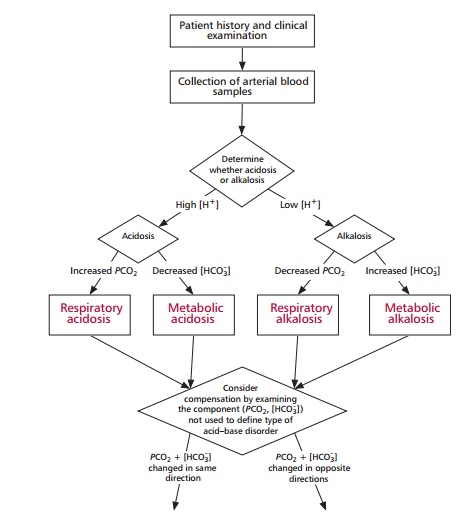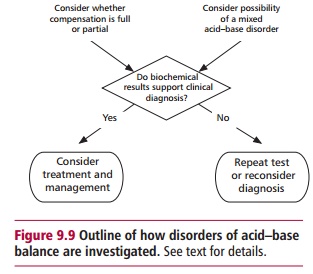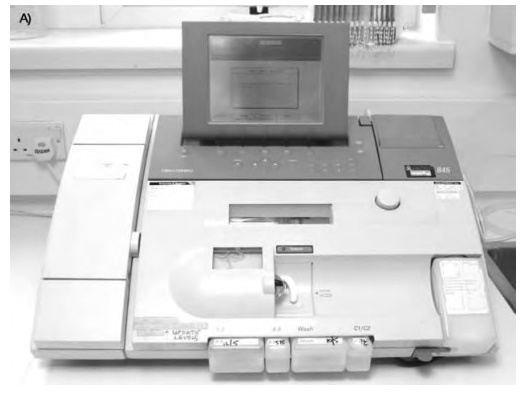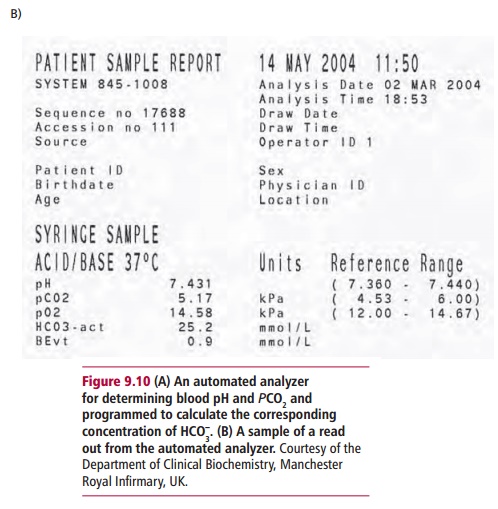Chapter: Biology of Disease: Disorders of Acid Base Balance
Investigating Acid Base Disorders
INVESTIGATING ACID–BASE DISORDERS
An investigation of an acid–base disorder involves three stages.
The first stage involves identifying whether the patient has an acidosis or an
alkalosis. The second stage is to determine whether the acid–base disorder is
metabolic or respiratory in nature while the third stage involves determining
the degree of compensation.


Acid–base disorders are investigated as outlined in Figure 9.9. An arterial blood specimen
is collected and its H+ concentration (pH) and PCO2 measured. The blood must be collected from an
artery into a syringe containing an


anticoagulant, such as heparin, and transported to the hospital
laboratory at 4oC. Care must be taken that air
does not enter any blood samples during collection. The concentration of H+
and PCO2 level are
measured directly using an automated analyzer that is also programmed to
calculate the corresponding concentration of HCO3– (Figure 9.10) according to the
Henderson-Hasselbalch equation. An acidosis or alkalosis can be identified from
the pH, that is the concentration of H+, in the blood. An
examination of the levels of PCO2
and HCO3– shows whether the identified disorder is
metabolic or respiratory in origin and indicates to what extent compensation is
occurring.
Related Topics